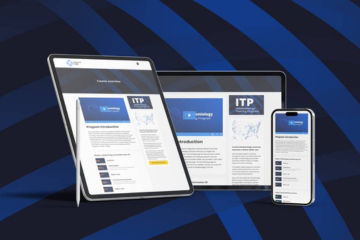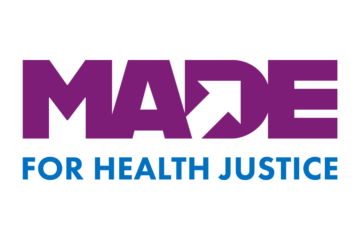
Since 2010, spending for state public health agencies has dropped by 16% per capita and spending for local health agencies has fallen by 18%. More than three-fourths of Americans live in states that spend less than $100 per person annually on public health, compared with more than 100 times that for medical care.1 Federal support for the Public Health Emergency Preparedness Program (PHEP) and the Hospital Preparedness Program (HPP), which are meant to provide funding for health agencies and hospitals, respectively, to prepare for a response, has declined by 30% since 2006. The consequences of these budget reductions include fewer staff ready to respond at a moment’s notice, fewer dollars available for investments in technology, and in some places, a decrease in overall coordination between health care providers and public health agencies.
The nation’s early response to COVID-19 showed the country’s limited capabilities in implementing basic epidemic control steps—testing, isolating, tracing, and quarantine. In this supplement, Hamilton and Turner and Ruebush et al provide critical and detailed reviews of the nation’s epidemiologic response and challenges with contact tracing and disease investigation. Drawing from these two articles, the present commentary identifies four steps to take to prepare the public health system to respond effectively to major future epidemic threats to the United States.
Modernize Data Systems
Thus far, the COVID-19 pandemic has been like looking at a photograph where your thumb obscures half the picture. Neglected, archaic, and siloed federal, state, and local data systems have limited the accuracy and availability of public health data related to COVID-19 in the United States. While there have been many useful dashboards created, as Hamilton and Turner identify, information on key variables is often missing. While information on race and ethnicity has been at least collected sporadically, other data critical to shape the response and formulate appropriate policy interventions, such as income and occupation, are unavailable. During this response where information on the virus was changing rapidly, data reporting was delayed by a manual-heavy process for data transmission. Thus slowing our reaction time to new hot spots and epidemiologic changes. Even where data were available, there were often a jumble of different collection and reporting methods, making analysis of viral transmission difficult. If public health officials could “see the whole picture,” they would recognize new outbreaks more quickly, would be able to move resources with more precision, and would be able to communicate new information to the public about steps they could take to reduce their risk of disease.
For example, with the current data infrastructure, tracking vaccine distribution data will prove challenging, a problem the federal government, states, and locals will have to fix while still in a crisis, which should have been a strong capacity built before this pandemic. When the Health Information Technology for Economic and Clinical Health Act (HITECH), which was part of the American Recovery and Reinvestment Act (ARRA) of 2009, allocated approximately $27 billion to encourage physicians and hospitals to transition from paper medical records to electronic medical records, there was very little funding to help public health agencies make better use of clinical information. Compare this to $50 million for public health data infrastructure included in the 2020 budget, an indicator of the huge differences in investment between clinical medicine and public health in the United States.
Federal investments are needed to ensure, as Hamilton and Turner write, “a totally integrated, high-speed, networked health system—from laboratories to health care facilities to public health data.” The Data is Elemental Campaign, of which Hamilton’s organization is a founding supporter, estimates that $1 billion over the next 10 years are needed to fully modernize the existing public health data infrastructure.
Implement a New Approach to the Disease Intervention Specialist Workforce
As Ruebush et al note, estimates for the number of contact tracers, also known in public health as disease intervention specialists (DISs), needed to effectively respond to COVID-19 nationally range from 100 000 to 300 000, approximately 100 times more than the existing workforce at the start of the outbreak. The process of hiring this many people at one time into government service, coupled with the need for training, poses a significant logistical challenge. While state and local health agencies must ensure baseline DIS capacity, fewer DISs will be needed once the pandemic subsides. However, this is likely not the last pandemic that the country will face. Three steps for building this capacity should be taken. First, the baseline number of DIS officials should be increased, so public health agencies remain capable of broadly meeting outbreak response needs routinely. Second, substantial cross training across public health agencies should be done so that public health officials from across agencies could be called into action to perform DIS work as needed in a crisis. And third, systems should be established to hire new DIS workers rapidly in a crisis, using best practices regarding how this has been done during COVID-19.
Part of building the DIS workforce is to ensure it is representative of the communities they seek to work in and reach. Significant inequities exist in numbers of cases and deaths among people of color and those who have lower income. People of color are less likely to have paid leave and be able to do their job responsibilities from home and are also more likely to have the preexisting conditions that COVID-19 has seized on—asthma, obesity, and diabetes, to name just a few. African American people account for 20.7% of COVID-19 deaths and Hispanic or Latino people account for 21.3% of deaths. Disease investigation efforts are likely to be more effective if they are built on substantial local knowledge of a community and acceptance by community members. Without local trust in public health agencies, outbreak investigations are likely to gather less information and take more time, lessening the opportunities to identify new cases and quarantine the exposed. Building a stronger DIS workforce that reflects community demographics will be critical.
Enact Policies That Support Contact Tracing Efforts
DISs conducting contact tracing for COVID-19 have reported a reluctance to identify contacts. Concerns regarding privacy, immigration status, and the possibilities that naming a contact could lead to homelessness or inability to get or pay for food if prevented from working, have combined to create barriers to truthful reporting. A 2019 article in The Atlantic chronicled how a city-enforced quarantine resulting from a measles outbreak led to missed paychecks and subsequent eviction due to the absence of paid sick leave. Policies at the state and local levels that require paid sick leave, rent forgiveness or forbearance, immigration assurances, and income replacement or that provide food for those named as contacts would help facilitate reporting. With such policies, cases would understand that their contacts would not be harmed for being identified.
Once an outbreak reaches a certain size and pace, contact tracing efforts are unlikely to be able to keep up with the demand, no matter the size of the workforce. It is critical for political leaders to understand the role that contact tracing can play and what it cannot do. It needs to be recognized that contact tracing is not a replacement for disease control policies, such as universal masking, physical distancing, the avoidance of large gatherings, or widely available diagnostic testing. Public health officials have reported that political leaders have, in some places, moved to relax broader disease containment measures, with the hope that contact tracing efforts would keep COVID-19 in check. What is needed is a strategic combination of both, and the ability to strengthen and loosen disease containment policies depending on the scale of the outbreak in specific states or localities.
Increase Visibility of and Communication About Public Health
Public health has long been struggling with an invisibility crisis. During the COVID-19 response, the cost of that invisibility was concrete and clear. For some, a call from a DIS may be the first time that they have ever been contacted by someone from a public health department. Furthermore, the call was all too often from a number that was “unknown” on their caller ID—an issue that many health agencies were able to remedy as the outbreak unfolded by ensuring that calls were identified as the department or a contact tracing taskforce or similar. Ruebush et al recount strategies including “partnering with trusted community leaders, offering incentives for participation, optimizing interviewers’ skills, and developing communication messages.” However, contact tracing and public support may be enhanced if state and local public health agencies increase their visibility before crisis events, such as COVID-19, occur.
Research suggests that leaders working in education, health care, housing, and business are largely unclear about the responsibilities and work of public health agencies and professionals and how they can collaborate to solve problems in other fields. In an epidemic crisis, one consequence of that is public health leaders may not have existing relationships needed to effectively put in place disease control efforts that depend on engagement with other parts of a community.
A recent poll found broad national support for public health protections such as stopping the spread of communicable diseases, protecting environmental quality, and supporting child and maternal health. It is not that people are opposed to public health or indifferent to its outcomes. The difficulty is that people do not know who does this work or how they do it. Even those polled who said they support public health could not identify the professionals responsible for carrying out the work. This “disconnect” limits understanding of what is required to do public health work effectively, reduces support for necessary policies, and can hinder uptake of important public health interventions to slow the spread of COVID-19. Through the end of this terrible pandemic and into the future, governmental public health leaders should be working to effectively communicate their responsibilities and goals of their work and make the profession more visible to their own communities.
These reflect some of the important changes needed in public health to improve its capacity to confront emerging infectious disease in the future. If public health is able to take these steps forward, it will not only increase the readiness of the country and its communities to cope with future infectious disease challenges, but it will also result in far more capacity to help address the many public health challenges the country faces every day.
This column first appeared with the title “Four Steps to Building the Public Health System Needed to Cope With the Next Pandemic” in the January/February 2021 issue of the Journal of Public Health Management & Practice. See the final authenticated version.




